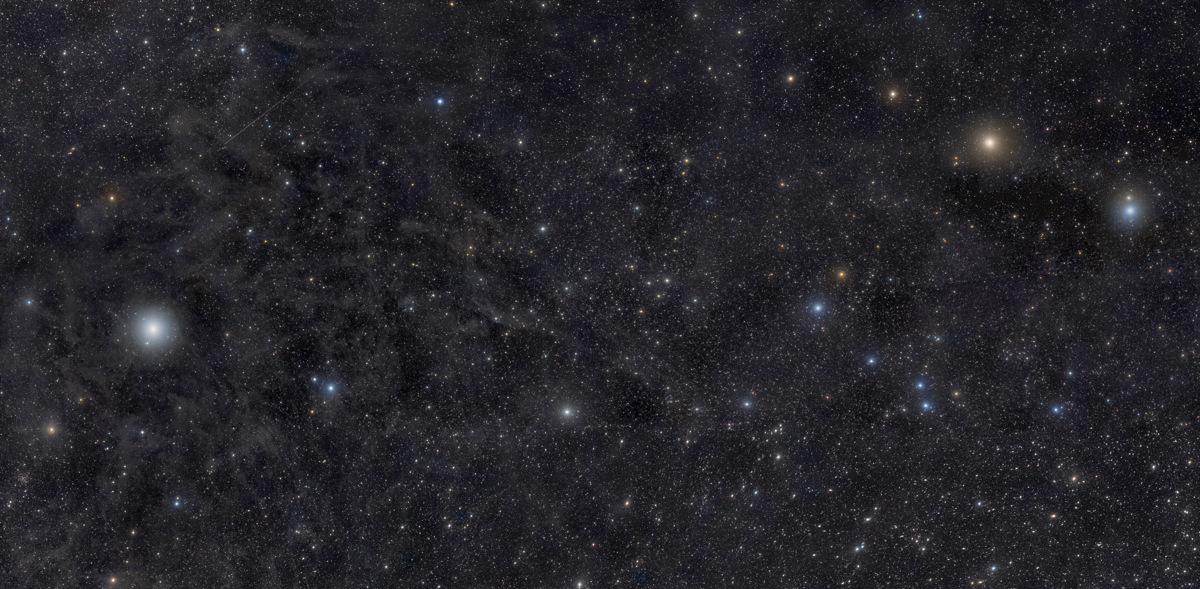It looks like you're using an Ad Blocker.
Please white-list or disable AboveTopSecret.com in your ad-blocking tool.
Thank you.
Some features of ATS will be disabled while you continue to use an ad-blocker.
27
share:
The North Star Polaris Is Getting Brighter
Little Dipper with the North Star, Polaris

One of the reasons that this is very interesting is because Polaris is part of a group of stars known as Cepheid Variables.
A little background on what a Cepheid Variable is. It is a star who's brightness changes, but does so with a regularity to it. They are normally very bright stars, 500 to 300,000 times brighter than our own sun. Using these types of stars helps us determine distances from us to other galaxies.
In fact, Cepheids helped develop Hubble's Law, which is:
The reason that this news about Polaris is so interesting, is in the past, it's changes were relatively small. But now, it seems to be increasing more than had been recorded before:
If you go and read the article, you'll find some irony here, in that the team investigating this, had problems because of the CCD technology that is used in most modern telescopes at observatories today. They actually had to hunt down places that still uses much older equipment.
Little Dipper with the North Star, Polaris

The North Star has remained an eternal reassurance for northern travelers over the centuries. But recent and historical research reveals that the ever-constant star is actually changing.
After dimming for the last few decades, the North Star is beginning to shine brightly again. And over the last two centuries, the brightening has become rather dramatic.
One of the reasons that this is very interesting is because Polaris is part of a group of stars known as Cepheid Variables.
A little background on what a Cepheid Variable is. It is a star who's brightness changes, but does so with a regularity to it. They are normally very bright stars, 500 to 300,000 times brighter than our own sun. Using these types of stars helps us determine distances from us to other galaxies.
In fact, Cepheids helped develop Hubble's Law, which is:
(1) objects observed in deep space (extragalactic space, ~10 megaparsecs or more) are found to have a Doppler shift interpretable as relative velocity away from the Earth; and
(2) that this Doppler-shift-measured velocity, of various galaxies receding from the Earth, is approximately proportional to their distance from the Earth for galaxies up to a few hundred megaparsecs away.
The reason that this news about Polaris is so interesting, is in the past, it's changes were relatively small. But now, it seems to be increasing more than had been recorded before:
According to Engle, if we take the measurements of al Sufi and Ptolemy at face value, the North Star has brightened by about two and a half times over the last two centuries. Modern interpretations of the historical data indicate that it could be as much as 4.6 times brighter than it was in ancient times.
If you go and read the article, you'll find some irony here, in that the team investigating this, had problems because of the CCD technology that is used in most modern telescopes at observatories today. They actually had to hunt down places that still uses much older equipment.
new topics
-
BIDEN Admin Begins Planning For January 2025 Transition to a New President - Today is 4.26.2024.
2024 Elections: 3 minutes ago -
Big Storms
Fragile Earth: 1 hours ago -
Where should Trump hold his next rally
2024 Elections: 4 hours ago -
Shocking Number of Voters are Open to Committing Election Fraud
US Political Madness: 4 hours ago -
Gov Kristi Noem Shot and Killed "Less Than Worthless Dog" and a 'Smelly Goat
2024 Elections: 5 hours ago -
Falkville Robot-Man
Aliens and UFOs: 5 hours ago -
James O’Keefe: I have evidence that exposes the CIA, and it’s on camera.
Whistle Blowers and Leaked Documents: 6 hours ago -
Australian PM says the quiet part out loud - "free speech is a threat to democratic dicourse"...?!
New World Order: 7 hours ago -
Ireland VS Globalists
Social Issues and Civil Unrest: 7 hours ago -
Biden "Happy To Debate Trump"
2024 Elections: 8 hours ago
27
